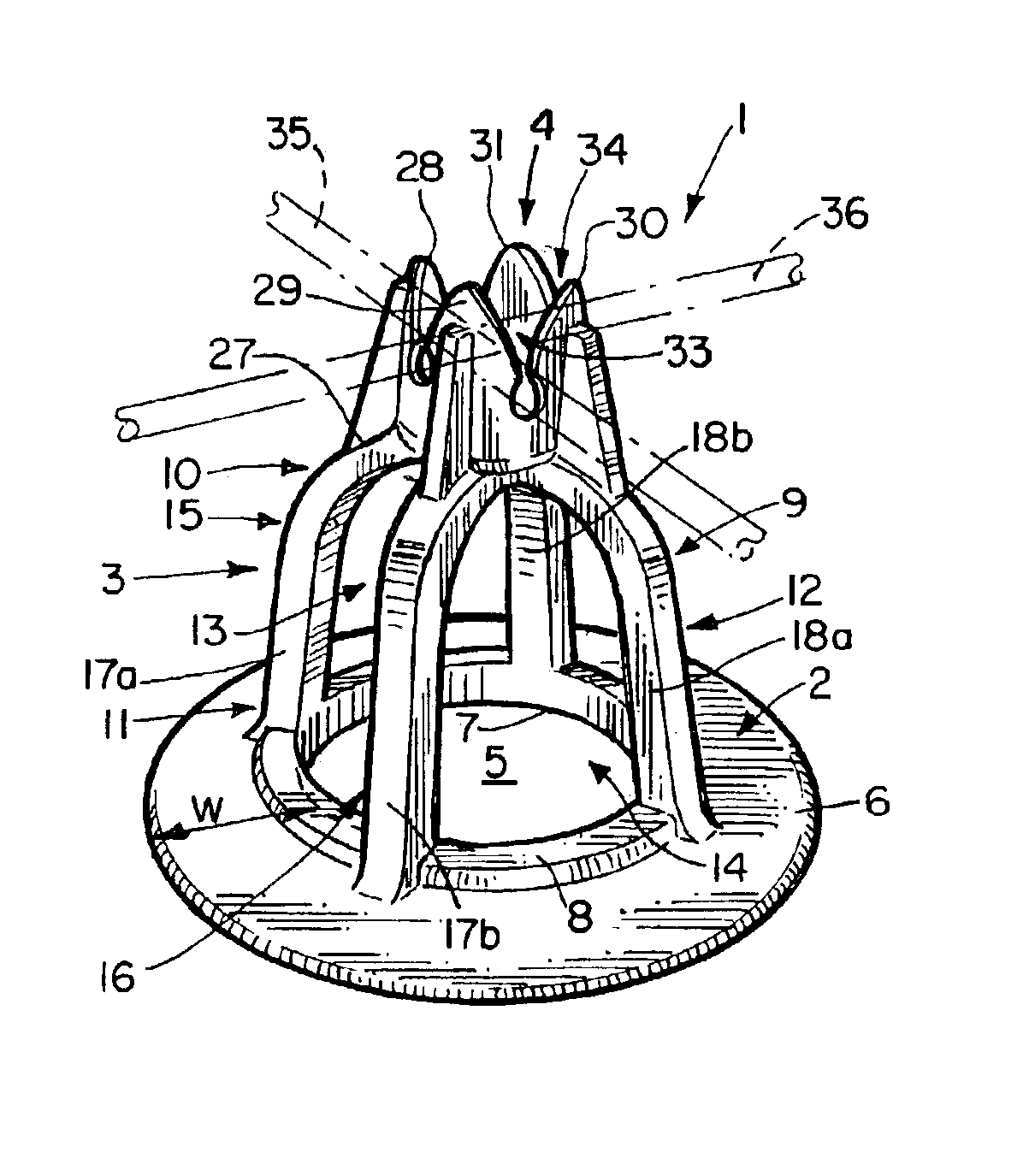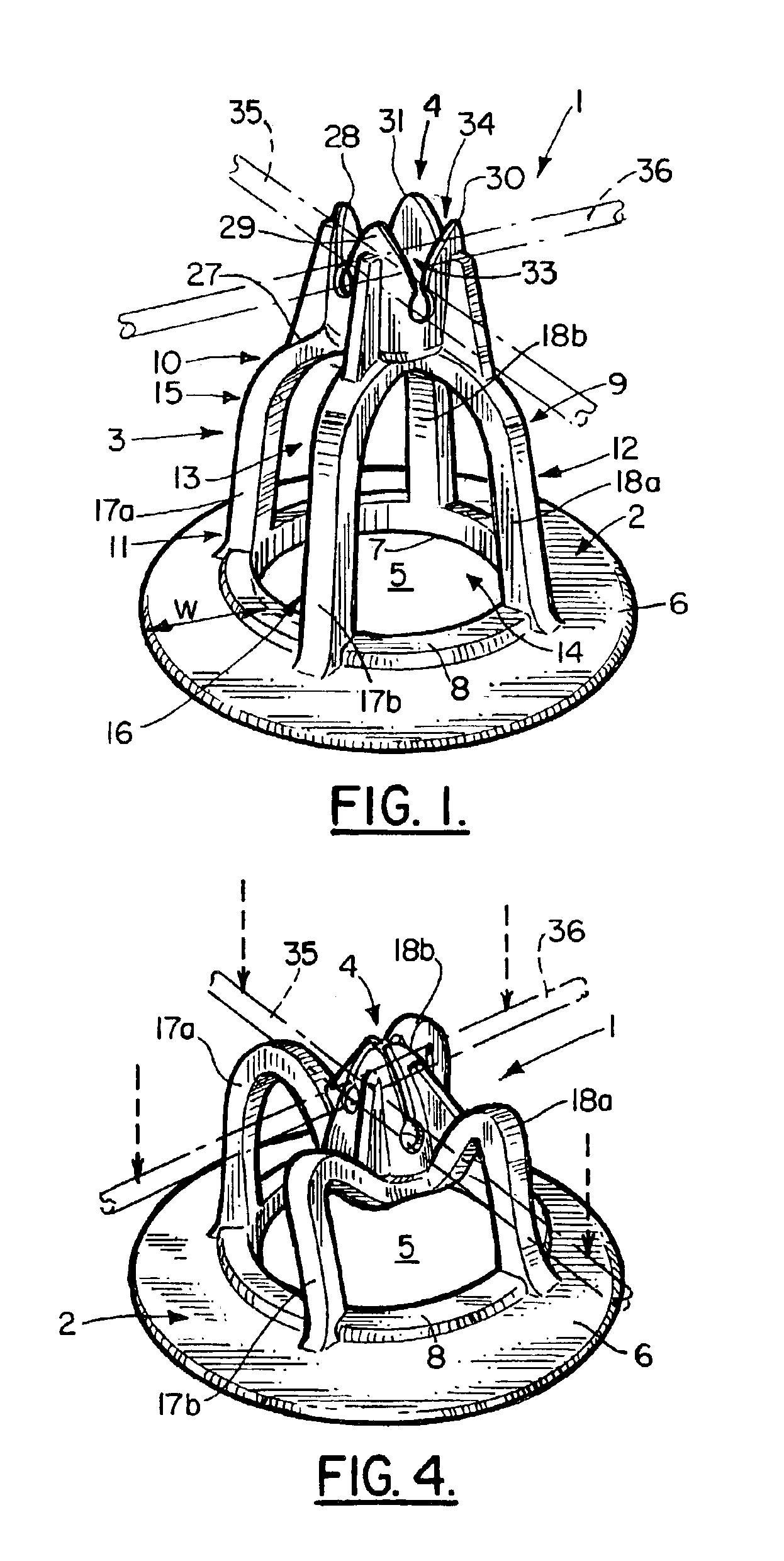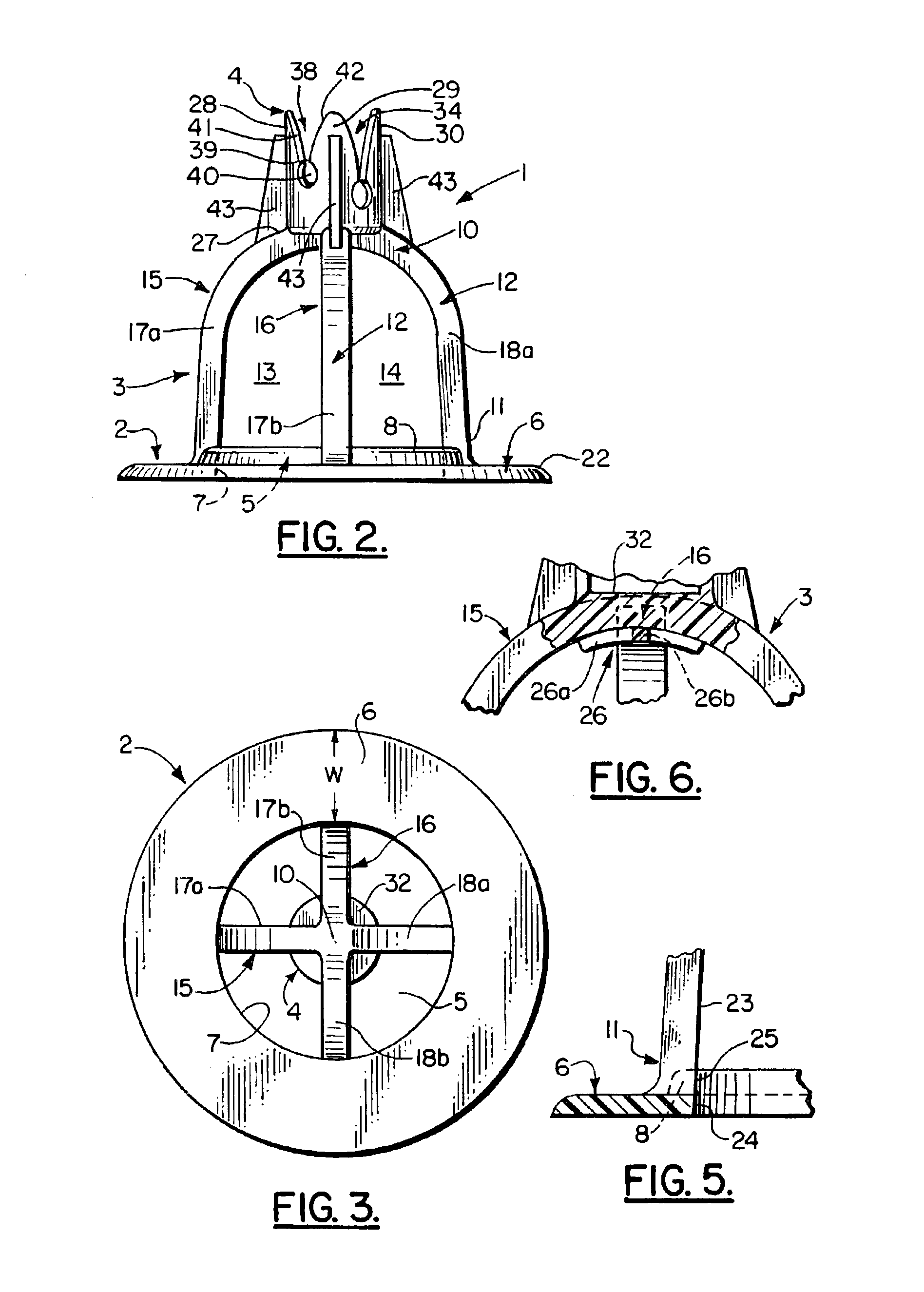Chair for supporting wire mesh
a wire mesh and chair technology, applied in the direction of structures, buildings, roads, etc., can solve the problems of wire mesh bending, uneven surface of the grid, and the chair being rotated or otherwise forced off the grid, and the efforts of the wire mesh formed by the wire mesh to be twisted and uneven, etc., to achieve the effect of only partially successful at bes
- Summary
- Abstract
- Description
- Claims
- Application Information
AI Technical Summary
Benefits of technology
Problems solved by technology
Method used
Image
Examples
Embodiment Construction
[0027]Without any intent to limit the scope of this invention, reference is made to the figures in describing the preferred embodiments of the invention. As seen in FIG. 1, the compressible chair 1 contains three basic elements. They are the base member 2, the support structure 3 and the setting 4. In the preferred embodiment shown base member 2 is disk-shaped having a central opening 5 forming a solid circular member 6 having a width “w” of at least 20% of the diameter of opening 5. Positioned about the perimeter 7 of opening 5 is a raised ridge 8.
[0028]The support structure 3 is generally bell shaped, preferably with its continuous side wall 9 tapered outward from its upper section 10 to its lower section 11. In the middle section 12 of the side wall 9 are two pairs of opposing arched-shaped openings 13, 14 forming two perpendicularly intersecting arches 15, 16 that form the upper section 10. Each arch 15 and 16 has a pair of opposing compressible, resilient legs 17a, 18a and 17b,...
PUM
| Property | Measurement | Unit |
|---|---|---|
| resiliency | aaaaa | aaaaa |
| flexible | aaaaa | aaaaa |
| diameter | aaaaa | aaaaa |
Abstract
Description
Claims
Application Information
 Login to View More
Login to View More - R&D
- Intellectual Property
- Life Sciences
- Materials
- Tech Scout
- Unparalleled Data Quality
- Higher Quality Content
- 60% Fewer Hallucinations
Browse by: Latest US Patents, China's latest patents, Technical Efficacy Thesaurus, Application Domain, Technology Topic, Popular Technical Reports.
© 2025 PatSnap. All rights reserved.Legal|Privacy policy|Modern Slavery Act Transparency Statement|Sitemap|About US| Contact US: help@patsnap.com



